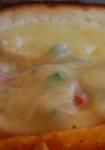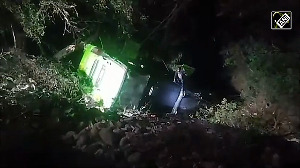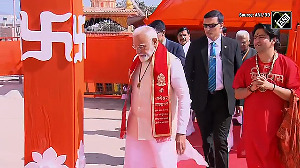The use of Neogel-90, an explosive used for commercial purposes, in Saturday's twin blasts in Hyderabad has foxed security agencies probing the attacks even as the needle of suspicion pointed at the Bangladesh-based Harkat-ul-Jehadi Islami and Naxalite groups.
Though a chemical analysis of the explosive material was awaited, sources in central security agencies did not rule out the possibility of RDX being used to trigger Neogel-90, an ammonium nitrate-based material.
Sources said the devices comprised explosives put inside a three-walled wooden box and covered with copper plates on the fourth side. Ammonium nitrate is hazardous when it comes in contact with metals like copper as it becomes combustible, they said.
While the first bomb was placed in a bag and kept near an ice-cream vending machine, the second one was kept on a bench.
The third one, which did not explode, was found hanging from a scooter, the sources said.
Some of the evidence from the blast sites suggested they could be the handiwork of HuJI, which has been known to use ammonium nitrate. But Neogel-90, usually used in the construction of roads, indicated the hand of Maoist groups, sources pointed out.
The Naxalites have also been planning to retaliate against the Andhra Pradesh government's policies, they said.
The use of Neogel-90 in terror attacks might be new to India though there were reports of two isolated seizures of similar explosives in the country and its neighbouring region -- one in Vadakkaenchery in Palakkad district in Kerala on February two, 2005 and another at Kantipur in Nepal in February 2006, when 475 kg was recovered.
According to the sources, 90 per cent of the casualties were caused by the puncturing of vital organs like the skull and heart by metal balls that were packed into the explosive devices.
They said a digital watch was used to trigger the blasts and a cell phone detonator was kept as a second line mechanism in case the first one failed.






 © 2025
© 2025